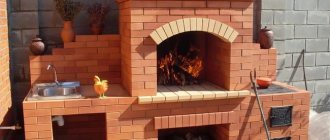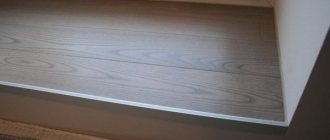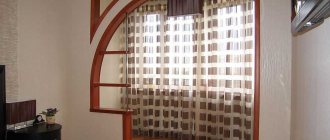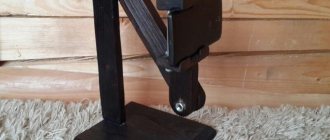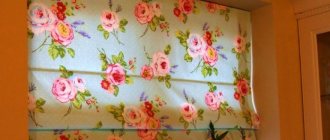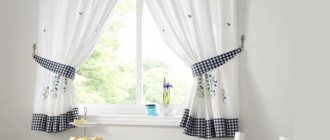Is it difficult to make brick beds with your own hands, if you do not have special skills and experience in construction, worries many people who have chosen this method of fencing and zoning a plot of land. The fencing structure, made of ordinary brick, provides the beds with not only an aesthetic appearance, but also acts as effective protection against moles and other pests. However, the cost of such a bed, if you resort to hired labor, can cost a pretty penny, so to save money, you can make fences for the beds yourself, having first read the step-by-step construction instructions.
Features of brick beds
A brick bed is the most suitable option for a site with classical architecture. However, when choosing a brick, you should understand that when working with it you need to have certain knowledge. In addition, one should take into account the fact that a structure made from such a building material will not be mobile unless it is completely disassembled.
The technique for building brick beds is different. These can be round edgings of a plot of land for flowers, made in 2-3 rows or laid with a brick block in the form of teeth. High brick beds are widely used, which are difficult to install on your own, but armed with a wealth of knowledge, it is quite possible. This earth embankment fencing is a full-fledged brick wall erected on a strip foundation using concrete mortar. The height of the sides can reach up to 1 meter.
It is important to note that a brick fence laid on a solid foundation is considered a permanent structure and it will not be possible to change the shape or move the bed to another location.
Advantages and disadvantages
High beds made of brick have the following advantages:
- strength and aesthetics;
- relative ease of installation;
- ease of maintenance;
- a beautiful view that ensures the site is well-groomed.
This type of construction is quite easy to make.
In addition, raised beds will be a real salvation for summer residents who grow vegetable crops. Such structures allow you to increase the duration of fruiting of vegetables and significantly save space. It should also be noted that plants planted on elevated brick structures do not require careful care, since the soil is at least overgrown with weeds.
The disadvantages of beds made of bricks include the high cost of consumables. To build a fencing structure, you will have to purchase brick blocks and components for preparing the mortar. However, the finished result is worth it. The disadvantage of brickwork is the difficulty of redevelopment, so before its construction you need to thoroughly think through the layout of the vegetable garden. For some people who prefer brick blocks, the disadvantage is the difficulty of working with such a building material. But by learning the basics of brick laying, this problem can be eliminated.
Advantages and disadvantages
Before building a brick fencing for garden beds, it is worth understanding its pros and cons. A detailed acquaintance with all the nuances will make it possible to find the right solution. The review should start with the pros:
- The main advantage of the design is strength. Even with increasing height, a brick fence remains stable and can withstand high soil pressure.
- If the bricklaying technology is followed, the bed will last for decades.
- The fence looks neat and does not lose its attractive appearance throughout its entire service life. No financial investments or large labor costs are required for care.
- A brick wall slowly freezes in the cold and warms up during the heat. Plant roots are guaranteed to be protected from low and high temperatures.
- High fences are sometimes an obstacle for dogs, who can rake through the bed and destroy the plantings. A brick structure cannot be overcome by pests crawling on the ground.
A brick bed has a main advantage - strength
. After reviewing the main advantages, it is worth considering the other side of the coin, that is, the disadvantages:
- The main disadvantage of brick beds is the difficulty of construction. First of all, this concerns labor costs. To make the masonry smooth, you will need patience and experience. The process becomes more complicated when it is additionally required to pour the foundation, to drive out high walls with mortar and jointing.
- The bed cannot be moved. If the brick is laid without mortar, the issue is still resolved. Dismantling walls built on concrete is tantamount to destroying the material. Most bricks turn into rubble, which is only suitable for filling a ditch.
- On heaving soils, it is better to abandon the beds or you need to build a reliable foundation. Otherwise, the brickwork will crack. The garden bed will take on an obscene appearance.
A brick ridge is considered a complex structure. Changing the shape and size in the future is not so easy, and sometimes impossible. All parameters need to be thought out in advance. The same applies to determining the location on the site.
Step-by-step instructions or how to avoid mistakes
Brick-lined beds have a beautiful, neat appearance and will fit into the interior of any home area. The process of laying a fencing structure is as follows:
- In the selected area, stakes are driven in around the perimeter and a rope is pulled between them, which will serve as a contour for pouring the foundation.
- The walls are laid out with a height of ½ brick and a width of 20 cm. In this case, the concrete base must lie at least 30 cm deep into the ground.
- Dig a trench along the previously marked contour, taking into account that its dimensions should be larger than the dimensions of the concrete tape. This is necessary so that there is room left for sand bedding.
- The bottom of the pit is leveled and sand is poured to a height of 15 cm. The embankment is leveled, filled with water and compacted well.
- Install the formwork from the bottom of the trench to a height of 10 cm more than the concrete strip.
- A layer of roofing material is laid, which acts as a waterproofing material, and several reinforcement rods are placed on top.
The masonry work begins from the corner of the building.
It will be possible to cover the bed with bricks only after the foundation has completely dried. This usually takes 1.5-2 weeks. Laying brick blocks begins from the corners, gradually moving along the wall. To ensure that the structure is level, it is recommended to tighten the construction cord while laying the blocks.
There is another way to make a brick bed, which does not involve pouring a foundation. Having decided on the dimensions, they begin construction. At the first stage, the turf is removed along the perimeter of the selected area. Next, stakes are inserted and a rope is pulled, the area is thoroughly leveled and the brick is first laid out. After which they are removed and mole protection is laid at the bottom of the bed. The bricks are returned to their place and, if necessary, one or two rows of brick blocks are added.
DIY raised beds
Most often, questions arise not when laying layers in high beds, but when making the box. Since women are often involved in gardening, including making fences for garden beds, many aspects may not be clear to them. To clarify the most difficult ones, we present photo reports of making boxes from boards and slate - the most common fencing.
From boards
Several options for how to make high beds from boards were in the photo above. The main problem is usually the connection in the corners. The easiest way is to make them overlap: just put one to the other at 90° and nail them all the way through. But there are aesthetes who strive to do everything right. The correct way is to cut two boards at an angle of 45° and connect them that way. This is the option that will be demonstrated in the photo.
Planed boards treated with impregnation to slow down rotting
To make it convenient to fix the fence on the ground, vertical bars or pieces of board are nailed in increments of 1.2-1.5 m, the length of which is approximately 20 cm greater than the selected height of the bed.
We nail vertical bars so that the box is strong and can be dug in
The lower end of the block or board needs to be sharpened - this will make it easier to hammer the fence into the ground. Then take a miter box or circular saw and cut the edges at an angle of 45°. By placing two boards together we get a perfect 90° angle.
Correctly made angle
For a strong connection, we install a block on the inside of the corner, to which we nail the boards.
This is what happened. It just lies with its “burdens” up. They are driven into the ground
It doesn’t take long to make a fence for high beds made of wood, but it’s even easier to join the boards end-to-end and nail metal corners for strength (pictured below).
The simplest option
From logs
It is no more difficult to make a similar box from hewn logs. For example, this option: two long sides are made of logs, and short sides are made of pieces of boards.
The advantage of logs is that they are heavy, and due to their weight they will hold the ground well
Whitewash the finished fence: both protection from pests and a more attractive appearance.
Let's start setting up
From slate
When making beds from flat or wave slate, questions also arise about how to secure it. The easiest way is to dig it in. But this is not economical: you will have to make the stripes at least 10 cm wider and there is still no guarantee that the slate will not “float” in the spring. In the muddy ground it will simply be squeezed out en masse. It can be fixed, but it will take extra time and effort.
Therefore, most often, corners or pipes are driven in on one or both sides of the sheet, which clamp the slate and prevent it from deviating much. In the photo, the corners are driven in only from the outside: from the inside there will be pressure from the mass of layers of the high bed, so that the fence will not fall inward.
Fencing beds with slate
The junction of two sheets is secured with a special welded plate. For reliability, they can be bolted to a wooden block attached to that side.
A piece of reinforcement with a welded plate - to insure the joint of two sheets of flat slate
Another option is to make a frame. Attach a beam or corner to similar racks with welded plates - whichever is cheaper. And attach slate cut into strips to this frame (it holds well with nails, but it’s easier with self-tapping screws).
Frame made of timber in a fence for a high bed
Using the same principle - with guides - beds are made from plastic panels and other similar materials. As you understand, there is no need for particularly virtuoso skill here. The main thing is that it holds up well.
How to prepare for planting?
There is no need for special preparation for planting a newly created bed. However, already in the 2nd year, 3-5 days before planting, it is necessary to remove the surface covering of the soil, which serves as its protection from pests, and loosen the soil by 10 cm. There is no need to dig with the entire shovel and take out plant residues. After this, walk around the area with a rake and level the ground. To prevent the top layer of the bed from drying out and to heat it up faster, it is recommended to lay a film on top.
Every summer resident dreams of a beautiful and well-equipped plot. There are many ways to create and allocate beds for growing various crops. Thanks to the sides of the structures, the soil is not washed away, and if you put a net on top of the soil, you can protect the plantings from attacks by moles and other pests.
To create fences, any type of available material is used. Sometimes ready-made structures are bought in gardening stores, but recently, summer residents are increasingly building vertical beds on their own. The most popular products are made of brick.
Making shelves and installing a pyramid
Before you make beds from boards with your own hands, you must make shelves. The resulting numbers must be measured, and then cut four boards according to them. On the sides they are cut at 30°, but only on one side. The other side must remain as it is. These steps must be repeated for each level of sticks.
Now you can move the long supports and horizontal boards into the greenhouse where the bed will be installed. Moving it afterwards will be quite problematic due to its impressive size. Each horizontal support is fixed with three screws according to the marks you made earlier.
The vertical edges must be perfectly level; for this it is recommended to use a level. If you are faced with the question of how to make beds from boards with your own hands, then the horizontal shelves must be leveled, they must be at the same distance from the surface, then the soil will not sag.
What types of brick beds are there?
Brick is a heavy building material that is used for the construction of various reliable fences. If you need to arrange a bed for low-growing flowers (marigolds, purslane) or lawn grass, then it will be enough to simply dig the bricks vertically into the ground. For an aesthetic appearance, it is recommended to install each stone at a slight angle. The result is an attractive, jagged-looking fence that resembles a saw.
To create a good edging in a low-type structure, an option is used in which the bricks are laid out in several rows (usually 2-3). To build such a structure, a small trench is dug, a cushion of sand is poured there and walls of bricks are laid out. There is no need to use cement mortar. But it is not recommended to build a fence from such material without a concrete layer if it consists of 4-5 rows.
Types of design of beautiful beds
There are several types of finishes
Boarded beds
This design looks strict, but neat. The advantages of this design are:
- convenient watering of plants;
- rapid heating of the soil;
- moistened soil is not washed away from the garden bed;
- easy installation;
- cleanliness and order are maintained.
The wooden board used for work is inexpensive, so this option is considered a budget option. You can buy it at any hardware store. When choosing, you should pay attention to what type of wood the fence will be made from:
- Larch, cedar. They have good protection from external influences.
- Oak, ash. They are considered the most durable and do not rot.
- Acacia. Very durable, can be used for more than one year.
- Pine. Without impregnation, it quickly rots and collapses.
For long-term use, the board must be treated with a special solution. If you neglect the procedure, the following problems may arise:
- swelling of wood;
- cracking;
- rotting;
- eating by insect pests.
The most common folk method of protecting wood is coating it with an aqueous solution of copper sulfate. Please note that heating wood may release toxic substances.
Many summer residents use pine needle resin as a coating, which provides good protection against harmful insects.
Gardeners also like to use antiseptics, which are sold in hardware stores. Their main advantage is protection against mold formation. The following types of antiseptics exist:
- Oily.
- Water repellent
- Combined.
- Soluble in water.
Before installing wooden structures, it will be important to correctly calculate the height of the bed. Experts do not advise making a box that is too high, although high beds have their advantages. With a slight cold snap, the ground will freeze, which may cause the wooden fence to expand. The wood may subsequently crack. It is optimal to make the height no more than 20-25 centimeters.
It is easier to determine the width and length of the box. It is necessary to calculate the availability of watering plants.
When performing the work of installing the fence, you will need a tape measure or measuring tape. When building a box, it is very important that all corners are level. Once you are sure of this, you can fasten the boards. It is better to strengthen the joints with metal corners.
After the box is erected, the inner surface is covered with a special cloth that will protect the soil from pests and weeds. Then you can add drainage and soil. The last point will be planting the plants themselves.
Beds lined with stone
The main advantage of such beds is their natural design, which fits perfectly into any garden. Also, stone decoration is long-lasting and does not require additional processing.
The stone perfectly hides all surface imperfections and imperfections. You can use absolutely any type, based on the preferences of the owners:
- Pebbles. It has a rounded surface and different colors.
- Sandstone. There is a large selection of colors. Has good breathability.
- Basalt. Well protects plants from various damages.
- Limestone. It quickly becomes covered with moss, which can add a distinctive feature to landscape design.
When working on a stone fence, it is important to understand the layout and laying rules. I alternate stones in a certain way, which can be of different sizes, to make a stable and beautiful structure. In the lower tiers of the masonry, it is worth leaving small empty spaces through which excess moisture will drain from the soil.
If all the work is done efficiently, the stone fence will delight the eye for many years. Therefore, it is better to contact specialists.
Framing with bricks
This design looks very unusual and extravagant. In addition to its stylish appearance, brick protects against the formation of rot. It also prevents the washing out of the useful soil layer.
When designing, you should understand that this design is very long-term. If you want to change the length or location of the bed, you will have to carefully dismantle the fence brick by brick.
Technology for constructing tall structures made of bricks
Typically, the creation of brick beds is carried out in a traditional rectangular shape. Before settling on a particular place for arranging a structure, you need to calculate every little detail, because such a structure will be in the garden or yard for more than one year.
After determining the size and type of future bed, you should begin creating a strip-type foundation. The technology consists of several stages:
- First, stakes should be installed on the site (at the corners of the future structure). Then between them you need to pull a construction cord, which will determine the contour of the future foundation.
- The wall of the structure is laid out in ½ brick, so for a full-fledged structure, a material width of only 200 mm will be sufficient. The concrete depth is at least 300 mm. The result should be a strip foundation of a shallow type.
- Then you need to dig a trench along a clearly outlined contour. Such dimensions are made so that they are larger than the dimensions of the tape. It is necessary to take into account the level of sand bedding.
- The hole of the created trench should be leveled, then a layer of sand (about 160 mm thick) should be placed. After this, the sand cushion is leveled, the area is abundantly watered and the compaction process is performed.
- At the final stage, the formwork is installed. If the trench is wide, then this procedure begins to be performed from the bottom of the pit. Installation of sides without backfill is permitted only along the edges of a narrow trench.
Upon completion of all manipulations, it is necessary to cover the side walls and bottom of the hole with roofing material (1 layer). Thanks to waterproofing, the process of absorption of cement mortar into the soil at the time of pouring concrete is prevented. At the bottom of the hole, on top of the roofing material layer, you need to lay out the reinforcement (2-3 rods each). It is definitely recommended to tie them with wire. To raise the reinforcing frame, pieces of bricks should be placed under the rods.
Since a monolithic structure is considered the most durable, it needs to be concreted without stopping. To make the structure more durable, it is recommended to add crushed stone to the cement mortar.
Bricks are allowed to be laid only after the foundation has completely hardened. In good weather, this procedure will take 2 to 3 weeks. Laying bricks begins from the corners, gradually moving along the wall. If you do not plan to finish the structure, then you should not wait for the solution to harden, but quickly remove the joints.
When the laying of bricks is completed, it is necessary to leave the structure for 14 days. Usually this time is enough for complete hardening. Then you need to fill the foundation (if such a process is planned in advance).
Upon completion of laying the bricks of the entire fence, the structure is not touched for 14 days so that the structure completely hardens. This time is just enough to fill the foundation, if such a process was initially thought out and planned. For such a procedure, sand, small stones or any construction waste that allows water to pass through are most often used. The voids that form between the walls of the trench and the concrete foundation should be replaced with any building material.
How to design your garden bed
There are many ways to design a garden bed, some even make a portable structure. This cannot be done when creating a brick fence, because brick is not the lightest building material. Therefore, you should immediately and finally decide on the place of construction, because then it will be difficult to disassemble everything and do it again. There is no need for such double work.
Then you need to decide on the purpose of the fence. When making it for a small flower bed or for a lawn, you don’t have to worry about height or strength. It is enough to dig the bricks in a circle at a slight angle, it will be beautiful and practical. And if necessary, such a fence can be easily disassembled.
One layer is enough so that all the bricks can be easily pulled out of the ground; this is possible if all materials are laid dry. To obtain an even better result, before starting installation, you need to sprinkle the soil with a small layer of dry sand.
If this is not enough, lay the bricks in several rows, but not more than two or three. Otherwise, during the seasonal rains or winter, the wall is likely to collapse. But when using a solution this can be avoided.
How to create a brick structure to protect plants from pests?
Very often, garden and vegetable crops suffer from the influence of moles. Therefore, summer residents try to arrange high-type beds with additional protection from such pests.
First you need to calculate the amount of material used. It is recommended to remove the turf along the perimeter of the bed, since the growing grass will cause clogging of the cultivated plantings.
Next, you need to mark the dimensions using stakes and construction cord for such purposes. After this, you need to level the area, especially in the area where the bricks will be placed.
After marking the contours of the beds, you should stick to the exposed cord and begin laying out the first brick row. It is not necessary to make the masonry perfectly level, since the structure may still sag a little as a result of rain.
After laying out the first row, you should check whether the fences are equal diagonally, and then look for defects and eliminate them. Then the bricks need to be removed, and a protective layer against moles must be laid on the bottom of the hole. Initially, it is necessary to place a mesh of galvanized material on the soil. On top you need to lay a layer of geotextile or black agrofibre.
If you want to build a higher structure, you need to lay 1-2 more rows of bricks. If you use hollow blocks, then you must fill the cells with the required amount of soil.
Making a brick bed without a foundation and cement mortar with protection against moles
There is no point in considering the process of arranging a fence made of vertically dug bricks due to the simplicity of the design. Now we will take a better look at making a brick bed without a foundation and mortar, at the bottom of which a protective net against moles is laid.
So, having decided on the size and location of the bed, we begin its construction:
- Knowing the dimensions of the fence and the dimensions of the brick, the consumption of building material is calculated. The turf is removed with a shovel along the contour of the future bed, otherwise the sprouting grass will clog the cultivated plantings.
- Using stakes and construction cord, mark the dimensions of the brick bed. At this stage, the site is well leveled, especially in the place where the bricks are laid.
- When the contours of the bed are marked, adhering to the cord, lay out the first row of brick fencing. You should not adhere to ideal, even masonry. All the same, after the rain it will sag in places, but the brick must be placed at least approximately evenly. When the entire first row has been laid out, once again check the evenness of the fence along the diagonals, looking for protruding bricks and other defects. After this, the bricks are removed to the side, and mole protection is placed at the bottom of the bed. First, a metal mesh of galvanized wire is rolled out on the ground. It is covered with geotextile or black agrofibre on top. All edges of the mesh and material must extend under the brickwork. Upon completion of the arrangement of the bottom of the bed, the bricks of the first row are laid out in their place, pressing down the mesh with covering material.
- If it is necessary to make a higher fence, lay one or two more rows of bricks. When using hollow blocks, the cells are pushed with soil.
The classic rectangular brick bed is ready; you can fill it with fertile soil. If you wish, using a similar method, you can make a shaped bed with your own hands, as in this photo. Please note that in both cases the walls are laid dry without mortar or foundation construction.
The video shows the laid out brick walls of flower beds:
We considered the construction of only classic rectangular brick beds. By showing your imagination, you can build quite interesting structures from this material.
https://etokirpichi.ru/vozvedenie/postrojki/gryadki-iz-kirpicha.html
https://agrognom.ru/building/garden-bed/kak-sdelat-gryadki-iz-kirpicha-svoimi-rukami.html
https://fermilon.ru/stroitelstvo/gryadki/gryadki-iz-kirpicha-svoimi-rukami.html
Vertical beds made from pallets
Recently, garden beds made from pallets have become increasingly popular. They are very easy to make and look organic. The pallet should be sheathed with burlap (on the inside), and the outer part with spandbond. For this it is better to use a furniture stapler. You need to fill the pallet with nutritious soil. Cuts are made in the burlap, where the crops will be planted. Advantages of this design:
- unusual appearance;
- saving space;
- obtaining pure greens, strawberries or cucumbers (since these plants are most often planted);
- no need for soil treatment;
- mobility of the structure, since it can be moved from one site to another.
Also, containers in which summer ornamental plants are grown are often constructed from wooden pallets. This type of raised beds serves rather as an aesthetic component of a summer cottage. But in such structures there is a tendency to grow zucchini, cucumbers and small pumpkins.
To create a bed, you need to spray the tray into 3 parts, and then remove a few slats. The side parts must be secured with self-tapping screws. The result should be a box without ends. These parts are made from the remaining crossbars. Then you need to secure the legs. If you will grow crops there that are accustomed to the conditions of the container, then drainage should be provided. If you want to plant strawberries, it is recommended to cover the space inside with agrofibre. Plants must be planted in slots on the sides of the container.
- attractive appearance;
- suitable for planting a large number of crops;
- speed in creating and moving structures.
In addition to pallets, for arranging original and practical high beds they use:
Summer residents are often interested in what to grow in high beds. Strawberries, cucumbers, zucchini, and pumpkins feel great in such structures. Also no less popular is growing greens (sorrel, lettuce, dill, parsley, spinach). You can experiment and try planting other crops.
Features of vertical beds
There are features of vertical beds for growing various crops. Below you can familiarize yourself with the most important nuances that gardeners highlight.
For greenery
In order to grow salads, dill, and parsley on your own plot, it is worth building vertical beds for greens, which can facilitate the process of caring for plantings and save space on the plot. It is best to give preference to structures that are made of pots, tires and pipes. Tiered beds can be placed along the wall of the building, near the stairs or near the barn.
Shelves with plantings are convenient to install not only in the vegetable garden, in the garden, but also in the greenhouse
For vegetables
The root system of vegetable crops is branched, so the volume of the planting container should be at least 5 liters. For growing, it is advisable to give preference to structures made of burlap and tarpaulin. It is convenient to plant cucumbers in barrels (metal or plastic). It is best to make holes in the upper area of the container, which will make it possible to make the lashes hang down. For the full development of plants, more than 15-18 seedlings cannot be planted in one barrel. Until it gets warm, the sprouts should be covered with a layer of film, to fix which you will need to use thick wire. It is recommended to place barrels in areas that are well lit by sunlight. The distance between the containers should be within 80-90 cm. To obtain a good harvest, it is advisable to provide the beds with an automatic soil moistening system.
With reasonable care, you can get a hefty harvest of cucumbers from a barrel.
For berries
For growing berries, it is best to give preference to vertical beds, which are made from tires, old pallets, pots and boards. Shelving should be placed in an area that is well lit by sunlight. You can also use bags. Planting containers are filled with a layer of light, slightly acidic soil and fine sawdust mixed with river sand.
Before planting seedlings or seeds in containers, it is important to make drainage holes
Strawberries can be planted in PVC pipes
For flowers
Flowers look quite beautiful when planted in pots of different diameters, which are placed on top of each other. The smallest pot is placed at the top of the pyramidal structure. Vertical flower beds, which are used for planting petunias, can effectively decorate the area.
Petunia looks perfect in pots installed in the shape of a pyramid
Video about making vertical beds with your own hands:
Video: tips for making raised beds
There are many options for creating vertical beds; each summer resident can choose the most suitable type of design and make it at his own discretion.
Share “Do it yourself brick beds”
Brick beds help make the area beautiful and well-groomed. But beauty is not everything. In addition to the unconditional aesthetics of the design, this brick structure prevents the formation of rot and the washing away of the useful fertile layer of soil (humus). By properly filling and using nets at the base of the bed, plants can be protected from pests and moles.
Why use raised beds at the dacha with your own hands: photos of finished structures
High beds not only decorate the area, but also reduce soil moisture, so in an area with close groundwater flow, such structures are simply necessary. They are often erected in greenhouses for ease of plant care.
Rectangular wooden structures
It’s easy to create high beds, just decide on the size and height of the structure, and also choose the material of manufacture:
Wooden models. The most common option, however, do not forget about the need to treat the wood against the formation of mold and fungi.
Classic, slightly elevated homemade beds made of wood
Plastic structures. The material is inexpensive and easy to care for. It is environmentally friendly and does not require special processing.
Plastic panels for flower beds
Galvanized metal. The strength and durability of the material attracts a lot of attention to it. When choosing galvanized material for building high beds, do not forget that the material heats up quickly in the sun, so it is suitable for shady areas.
Joint of metal fencing for garden beds Neat flower beds made of stone Original version made of plastic boxes
It is worth choosing a fencing model and material for work based on the climate, material capabilities and requirements for the final appearance.
Pros and cons of raised beds in a summer cottage
Raised beds for strawberries and other crops have a whole range of advantages:
- you can arrange a vegetable garden even in uncultivated areas;
- there is no need to dig the entire area, just loosen the soil inside the structure;
Interesting design in the center of the site
- Weeds grow less and are easier to weed;
- neat paths are made between the ridges, which are convenient to walk on even in bad weather;
- the speed of crop ripening increases, as the soil warms up faster;
- when properly arranged, high beds with sides have a drainage layer;
- it is easier to insulate structures for the winter.
It is not difficult to assemble such models. Decide in advance on the location, height and material of the fence for raised beds. Here are some interesting photographic examples of garden design using such structures:
Features of fencing beds with bricks
For classic landscape design at a dacha or at a country house, fencing beds and flower beds made of brick is a beautiful and durable solution. But to create such structures, the specific features of stone structures should be taken into account. The fact is that brick fences (high) cannot be movable and are made with the expectation of being permanent. However, if it is still necessary to move the structure, it will have to be completely disassembled.
The structure is a wall of brickwork, the height of which can exceed 100 cm. To create stability, you need to follow the technology of building a brick wall, and under its base you need to make a foundation, in this case, a strip foundation.
A special feature of brick fencing beds is the wide variety of shapes they can create. They can have a square, rectangular, round shape or a complex combined design with different heights and geometries. Such fences fit perfectly into any plot of land and are becoming increasingly popular among gardeners.
Common Benefits of Raised Beds
- The garden looks neat, well-groomed and stylish. The beds can be made of any shape and size. They will fit perfectly into any garden style. They can fill various corners of the site, forming functional zones: a vegetable garden, a tea bed, a herb garden, a strawberry garden, a flower garden. The border is clearly marked and the grass from the paths does not creep into the garden bed.
- Such ridges and paths between them are convenient to maintain. You don’t need to bend over too much, it’s convenient to use a folding chair, the rows can be filled with gravel or sawdust, seeded with lawn, paved with tiles or boards.
- This is an excellent solution for areas with soils unsuitable for farming, since the entire volume of plant soil is poured into a box. Poor soils include high groundwater levels, poor or rocky soils. In such cases, you will have to make a box 30-70 cm high so that the plant roots have enough bulk soil for growth and nutrition. It is also possible to arrange high beds on inconvenient slopes, increasing the usable area of the garden.
- In such beds, the soil warms up earlier and the growing season is extended. Thanks to the layer of compost, the plant roots will be warm even during spring frosts, so there is no need to constantly cover the plantings.
- Constructing raised beds is not difficult to implement. Even one person can handle this task.
Raised beds also have disadvantages:
- Material costs.
- Soil drying out in hot weather. You will have to water more often, but this problem is solved by a drip irrigation system.
- Water can stagnate if watered excessively.
- There are crops that should not be grown in high beds. These are, for example, sunflower and corn.
The advantages of brick beds over analogues made from other materials include the reliability of the structure and the ability to build a box of any height and configuration.
Let's look at other possible materials for constructing high beds and their disadvantages:
- Wood is the most short-lived material.
- Concrete gradually increases the pH level in the soil in the first 3 years and is labor-intensive to implement.
- Slate or polycarbonate will not withstand the load from the soil even with a minimum bed height of 25 cm.
- Natural stone requires a lot of time to collect stones and great physical effort during the actual construction of the sides.
Functions of brick bed fencing
Brick fencing is designed to perform 2 main functions: aesthetic and practical.
- Land plot design. Brick beds effectively improve all plantings on a personal plot. They can be either free-standing or part of the overall architectural composition.
- Division and designation of territory. With the help of such fences, the entire area of the land plot can be divided into zones for planting vegetables, berries and ornamental crops, as well as the location of plantings and paths between them can be identified.
- Plant protection. High brick fences help protect plants from weeds, pests, and rodents. They help increase the flowering time of plants, their growth and fruiting.
Advantages and disadvantages of brick beds
Brick beds have their advantages and disadvantages, so before building such a structure on a site, you should analyze all the pros and cons.
The undeniable advantages of brick fencing:
- aesthetics, neatness on the land plot;
- high strength and durability of the structure;
- rapid heating of the soil in spring;
- ease of plant care;
- protection of vegetable and ornamental crops from weeds and pests;
- increase in fruiting time.
Brick fencing has the following disadvantages:
- the difficulty of erecting a high brick structure;
- lack of mobility (possibility of moving) the fence;
- rapid drying of the soil;
- attractive to cats.
Types of beds
Brick beds can have almost any shape - from simple geometric to complex fantasy. The simplest and most popular designs are rectangular in shape. They are practical, uncomplicated, great for growing vegetables, herbs, herbs and salads, as well as low-growing berries such as strawberries and wild strawberries.
See also
Properties that distinguish soil from rock and how they are formedRead
For flower beds, curly shapes are often chosen - circles, ovals, curved structures consisting of one or several beds. Everything here is connected with the imagination, desire and capabilities of the customer.
Also, using brick or other materials, you can simply lay out the frame of the beds, practically without raising them above ground level. Such fences not only prevent the growth of plants, but also do not allow irrigation water and dirt to flow onto the paths, dirtying them.
Expert opinion
Zarechny Maxim Valerievich
Agronomist with 12 years of experience. Our best country expert.
Ask a Question
For greenhouses and greenhouses, high beds are more relevant, which reduce the physical load on the person who cares for plantings and crops.
How to make brick beds with your own hands: step-by-step instructions
Brick beds can be made with your own hands in 2 ways - with high brick sides and a low fence of 1 or 2 bricks. Almost any brick left over from construction, old brick or, conversely, purchased specifically for this purpose, will be suitable for this purpose.
The difference in the construction of such fences lies in the height of the structure and the methods of implementing the task. To install high beds made of brick, you must have experience in laying brick walls and will require the construction of a strip foundation (photo below). To create a low brick frame for a garden bed, you don’t need much experience; any novice gardener can handle this task.
How to make raised beds out of brick with your own hands
In order to make a high brick fence, you will need the following:
- the brick itself;
- cement, sand, crushed stone;
- lumber for the construction of formwork;
- steel reinforcing rod, binding wire;
- tape measure, building level, string, trowel, bayonet and shovel, container for mixing mortar.
Spring preparation of beds for various vegetable crops
The productivity of a bed depends on many factors
To achieve good results, it is important to properly prepare the site
Growing each individual crop has its own nuances. For example, preparing a bed for carrots in the spring will be easier if all the necessary work is done in the fall. To ensure a rich harvest, it is recommended to mix a little sand into the seeds. To grow cucumbers, you will need to add a lot of compost to the soil, not fresh, but pre-prepared. By steaming the soil with boiling water, you can get rid of harmful microorganisms. A pinkish solution of potassium permanganate is also suitable for these purposes.
The process of preparing a bed for onions in the spring is practically no different from the scheme according to which carrots are planted. These crops have similar growing conditions and can make excellent neighbors. It is also recommended to add a small amount of sand to the onion seeds. It will make harvesting easier later. Garlic needs mineral fertilizers and plenty of sun, while tomatoes like organic fertilizers. To obtain a rich potato harvest, you will need to dig the soil twice in autumn and spring. Beets grow well in soil with compost or humus.
Proper preparation of plants and soil for planting will ensure a high yield
How to properly prepare a harvest bed: video review
https://youtube.com/watch?v=riqG61JjjiQ
https://youtube.com/watch?v=BelMopvRbQk
https://youtube.com/watch?v=Tw23Ouf_Boo
Brick beds in a greenhouse
Fences in a greenhouse can be made of any material, but brick sides are still the most solid and durable. With a special design, you can sit on them or use them as small tables for a variety of needs. For greenhouse beds, white, red brick or paving stones are used. Stone fences look great if the greenhouse floor is tiled, large fractionated expanded clay or the same paving stones.
Brick fences in greenhouses can be of different heights; they cope excellently with the “warm bed” task, tolerate high humidity well, and their service life is not limited by time.
Brick structures in a greenhouse are made using the same technology as on the ground. A foundation is provided for high brick fences at the stage of laying the general foundation of the greenhouse. Low brick fences without a foundation are made after the greenhouse has been fully installed and assembled on site.
Traditional brick
The brick edging of a flower bed or garden path will look quite organic, especially against the backdrop of a house made of the same material. A brick border can be made in different ways:
- dig straight or at an angle;
- lay out in one or several rows using cement mortar;
- make a raised flower bed of any shape;
- make a border with a barrier for lawn grass by placing one row of bricks on the edge, and digging the second one next to it flat into the ground.
By analogy with brick, paving stones can be used for a neat and durable border. The disadvantage of brick fencing is its high price and stationary nature.
Advice from experienced gardeners
Tall brick structures for personal plots have their own characteristics of care. Experienced gardeners offer several useful recommendations that will significantly simplify work on such structures and help increase plant growth and productivity.
Gardener care tips:
- The big advantage of raised beds is the soft, almost ideal soil. It is strictly forbidden to step on it or walk on it. To make it convenient to care for plants, the width of the fence structure should not exceed 120 cm.
- To prevent the soil from drying out and maintaining an optimal level of moisture, it is recommended to mulch the beds with planted plants. Grass, straw, wood chips or leaves are suitable for this.
- For ease of watering, you should consider an automatic watering system before filling the fence with soil. This can greatly facilitate plant care and maintain soil moisture at an optimal level.
- Care should also be taken to protect plants from pests and rodents. Therefore, it is imperative to use a construction metal lattice (preferably with frequent spacing) as the basis for the fencing design.
- To protect plants from weeds, a barrier is provided at the bottom of the base. For this purpose, you can use old cardboard, thick paper in several layers, and unnecessary floor mats.
- To increase the yield of vegetable and fruit crops, one should not forget about regularly fertilizing the soil with compost, as well as systematically loosening the soil as necessary.
- At the end of the growing season, it is recommended to cover the soil of the bed with mulch. This will help protect it from freezing and compaction in winter. For this purpose, dry straw, grass, leaves, and a mixture of organic waste from the garden are used. To protect fertile soil from low temperatures, garden film is also used.
Following the recommendations can significantly simplify plant care, and systematic prevention of fenced and high brick beds will improve plant growth, health and fruiting.
Advice from professionals
At first glance, edging ridges with brick fences seems like a simple matter. In fact, here you need to know the requirements for structures and the intricacies of construction. Advice from professionals will help you avoid making serious mistakes:
- High ridges are filled with a substrate, prepared soil or organic matter. You cannot walk on the filler. To make it convenient to serve plants from both sides, the width of the fence is made to a maximum of 1.2 m. If it is possible to approach from one side, the parameter is reduced to 0.8 m.
- To maintain moisture, the soil on high ridges is mulched. Peat, sawdust, small straw and other dry organic matter are suitable.
- It is better to organize drip irrigation with automated water supply.
- Before loading the soil, the bottom of the pit is covered with galvanized mesh. It will protect the entry of rodents from the garden.
- To maintain soil nutrition, organic fertilizers are periodically applied.
- Before wintering, the soil is covered with leaves, sawdust, and straw. Organic matter will reduce the likelihood of soil freezing and destruction of useful components.
It is easier to lay out fences along a stretched cord
. By following the simplest tips, a gardener will greatly facilitate his task of caring for plantings.
